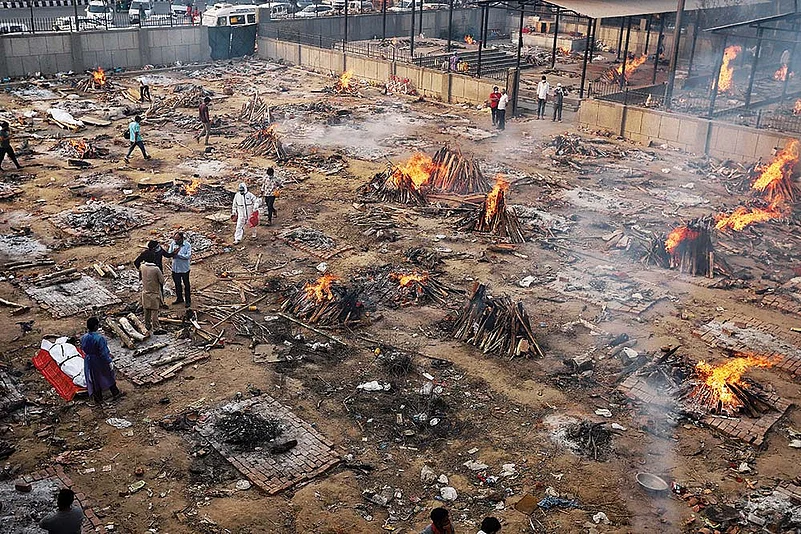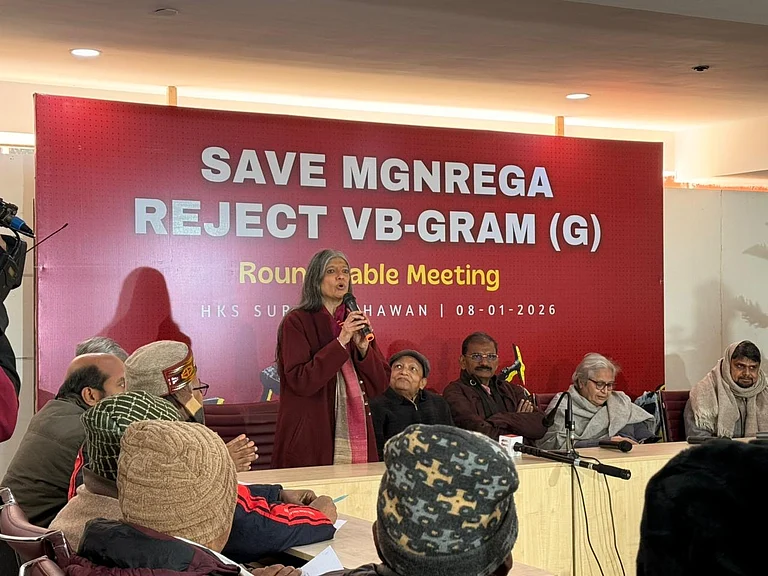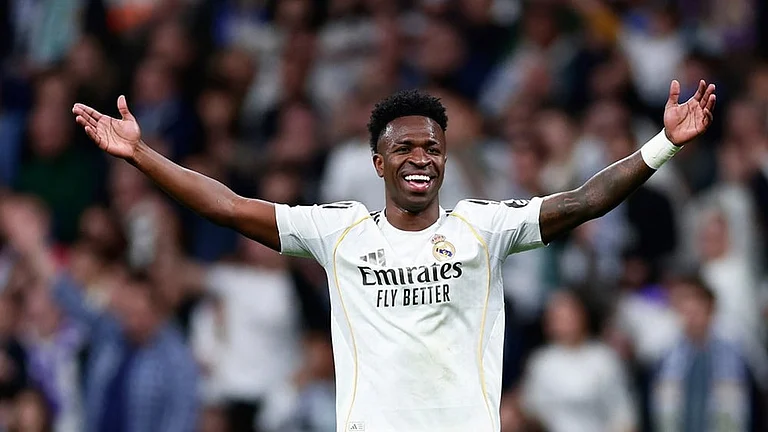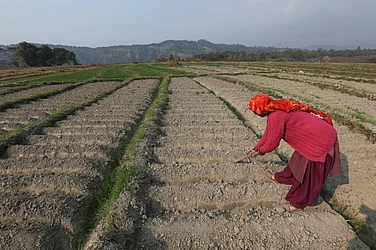In 2020 and 2021, humanity collectively lived through the worst pandemic in a century. Most of humanity survived, but many perished. While that is perhaps the most obvious difference in the pandemic-lived experience, it is not the only one. All of us alive today lived through the coronavirus pandemic, but some lived a very different pandemic from others. So much so that Covid-19 was indeed a tale of two (or more) pandemics. As we turn the corner on our second pandemic year, perhaps we should look back and reflect, both on our lived experience, but also that of others. After all, the pandemic is not over and reflection may give us clarity critical for the times that lie ahead. Besides, Covid is not the last pandemic we will face.
While I am no Dr Manette (I hope that doesn’t change), I do hope Dickens and his publishers won’t bear a grudge for borrowing some of his famous words: It was the age of science; it was the age of anti-science. We had all the tools in our hand, we had no tools in hand. It was the spring of hope, it was the winter of despair. It was an opportune pandemic, it was an apocalyptic pandemic. It was a pandemic of stock market gains, it was a pandemic of irreplaceable losses.
Bodies on streets, money in the sheets
Epidemic curves, or epi curves, are a graphical representation of cases, hospitalisation and deaths over time. When I was in medical college, I first saw epi curves from the 1918 Spanish Flu. I could somewhat understand the scale of the pandemic, but didn’t think too deeply about what those epi curves actually meant. Cut to 2021. When India was hit by a devastating second wave, epi curves were more than just charts—the horrific rise in Covid-19 cases, hospitalisations and deaths, when represented graphically, produced eye-watering epi curves with fully vertical ascents. I could feel those curves. They were a lived experience of devastation, national agony and total collapse of the healthcare system, of which I’m a part. These curves represented the blood of those who died gasping for oxygen, the sweat of health workers pushed beyond limits, and tears of families left broken-hearted. There were literally bodies on the streets.
Some were paying attention to charts of a different kind, the stock market. Like the vertical epi curves that represented suffering, there were vertical assents on stock market charts. Strangely, market forces were entirely disconnected from the pandemic hellscape that had engulfed our lives. Stock market indices rose as steeply as the epi curves. As the death toll mounted, so did gains from stock-market investments. As some lived the agony of vertical epi curves, others reveled in vertical share indices. Even as the pandemic continued to expose the ugliest of inequities, they continued to rise drastically. The wealthiest consolidated more wealth while the poorest perished with neither oxygen to breathe nor food to eat. The richest countries threw away more Covid-19 vaccines than poorest countries ever got. While some companies created record value for investors, those who built the nation with their bare hands were abandoned. Many of those who built hospitals with their manual labour, spent their final moments with no hospital beds. I remember an acquaintance telling me that he quadrupled his investment portfolio during the pandemic. He said he had never seen such gains. I remember thinking I had never seen so many people die.
ALSO READ: Song Sung Blue: The End As A New Beginning
Pandemic babies & cremations
A few months back, a friend and I was reflecting on our work experiences through the pandemic. My friend is an obstetrician and gynecologist who brought more than a few pandemic babies into this world. There is nothing that captures human elation quite like the birth of a baby.
However, during the Covid-19 pandemic, my friend, who normally only cared for women who are pregnant or were trying to become pregnant, also served Covid-19 patients. It was an experience of a different kind. While physicians like myself are more experienced in these bitter experiences, none of us had ever experienced anything like Covid-19. If true joy is watching a baby taking its first breath, true despair is reliving the agony of a family that has lost everything. While most health workers had difficult experiences, for some, it was unimaginably tragic—right after performing the last rites of their parents and loved ones, they had to return to attend to their patients. Every day, as patients died in front of their eyes, they relived the final moments of their loved ones.

Labourers migrate, influencers travel
In March 2020, India announced a nation-wide lockdown, the largest sequestration of human beings in the history of humanity. While it’s possible the lockdown helped prevent more suffering than it caused in 2020, the reckless abandon in early 2021 negated any possible benefit. But more on that later. The lockdown caused enormous suffering, and some suffered more than others. Among the worst-hit were millions of migrant workers who were suddenly left stranded without work, shelter or food. Bereft of any support, millions of men, women and children began the long migration back to their villages. Millions walked thousands of kilometres back home, while thousands perished on the way. For migrating labourers, exhaustion, dehydration and starvation can be even more lethal than any novel coronavirus. A haunting image of a sobbing migrant worker, Rampukar Pandit, appeared widely in Indian media and put a face to the humanitarian crisis. He said, “We labourers have no life, we are just cogs in the wheel, spinning continuously until we run out of life. The rich will get all the help, getting rescued and brought home in planes from abroad. But we poor migrant labourers have been left to fend for ourselves. That is the worth of our lives.”
In March 2021, the Delta variant’s rapid spread caused some cities to announce fresh lockdown plans. This time, they provided advance notice for the population to prepare by stocking up on essentials. Some took this opportunity to escape to greener pastures. Instagram influencers shared pandemic travel trips and once-in-a-lifetime travel deals. For some, pandemics and lockdowns mean perilous migration, for others the perfect travel story on the ’gram. C’est la vie.
Mass gatherings and socially distant funerals
Early in 2021, before the advent of the second wave and the Delta variant, some in India had declared a premature victory over the pandemic. Unfortunately, we learned that things can turn on a dime, and what some thought were post-pandemic celebrations, became mass gatherings that poured fuel on fire. Whatever benefits we gained during the 2020 lockdown, was forfeited by mass gatherings in 2021. We suffered the lockdown, but our failure to be cautious meant many of the lives saved in 2020 were lost in 2021. A wave that started with mass gatherings transitioned quickly to socially distant funerals.
ALSO READ: The Four Horsemen Of Apocalypse
Saviours: Gratitude, criticism, death threats
Through the pandemic, doctors, nurses, scientists and health workers threw themselves into the fire to pull others out from it, often at great personal risk. Some spent months away from their families to fight the virus, only to lose their loved ones to it. Many perished in the line of duty. Most people understood and appreciated sacrifices of the first responders. More often than not, they were celebrated as heroes and saviours. While saving lives is possibly the most fulfilling job and a reward in itself, saving lives during a contagious pandemic is a risky occupation. Fear and uncertainty can bring out the best in some, but also the worst in others. Fuelled by fear, frustration, loss, misinformation and disinformation, some turned on health workers and scientists. Some individuals, including prominent voices with large platforms and unclear agendas, blamed these first responders for the pandemic problems, the very same problems the responders were trying to attend. Many were subjected to targeted trolling, abuse, threats and acts of violence. Imagine working your hardest to solve a problem, but being blamed for causing it, or worse, being threatened for your labour!
The forever pandemic
Everyone alive today is here because our ancestors survived past pandemics. All of us here today are here because we survived at least one pandemic. Covid-19 may have left us bloody-nosed and battered, but the days of SARS-CoV-2 are surely numbered. Nothing lasts forever, not even pandemics, but for some, there never was a pandemic, while for others, it lasts forever.
ALSO READ: Meowdi: A Short Story by Perumal Murugan
I have an acquaintance who believes the pandemic is an event manufactured for population control. He believes vaccines and non-pharmaceutical interventions are attempts by governments to control the population and create a New World Order. For him, the pandemic never existed. Many have tried to convince him. All have failed. He’s disconnected from the lived reality. For him, there never was a pandemic. Contrary to what this description may suggest, he does not have any diagnosed mental illness and is a perfectly functional (and successful) individual.
During the second wave, I had a patient who recovered from Covid-19, but the virus inflicted a wound on her that may never heal, having claimed her husband and both parents. She was following up with me for her diabetes, an effect of the virus. Every time she consulted me, she asked: “Why did they all die? Did I infect them?” When I asked her about her diet and medications, she would plead, “I just want my family back.”
ALSO READ: Gods, Bots And The New World Order
Her diabetes is now better controlled, but there are wounds for which medicine doesn’t have a cure. I’ll endeavour to provide all the support I can, but this virus often leaves me feeling helpless. Sometimes, the only medicine is time, but even that can’t completely cure all wounds. Will the pandemic ever end for her? Will she get back what she lost? Her pandemic is forever.
My intent is not to criticise those who gained, traveled, doubted or threatened. I’m not passing judgment on anyone’s lived experience. While some suffered more than others, everyone faced their own challenges. My intent isn’t to blame or shame, but to reflect. For the vast majority, there won’t be much of a difference. For others, it will be profoundly different. Because, the pandemic was a tale of two (or more) experiences. I hope we all recognise this and endeavour to make the post-pandemic lives a little brighter for all.
(This appeared in the print edition as "Tale of Two Pandemics")
(Views expressed are personal)
ALSO READ
Dr Swapneil Parikh is a physician and co-author of the coronavirus: what you need to know about the global pandemic





















